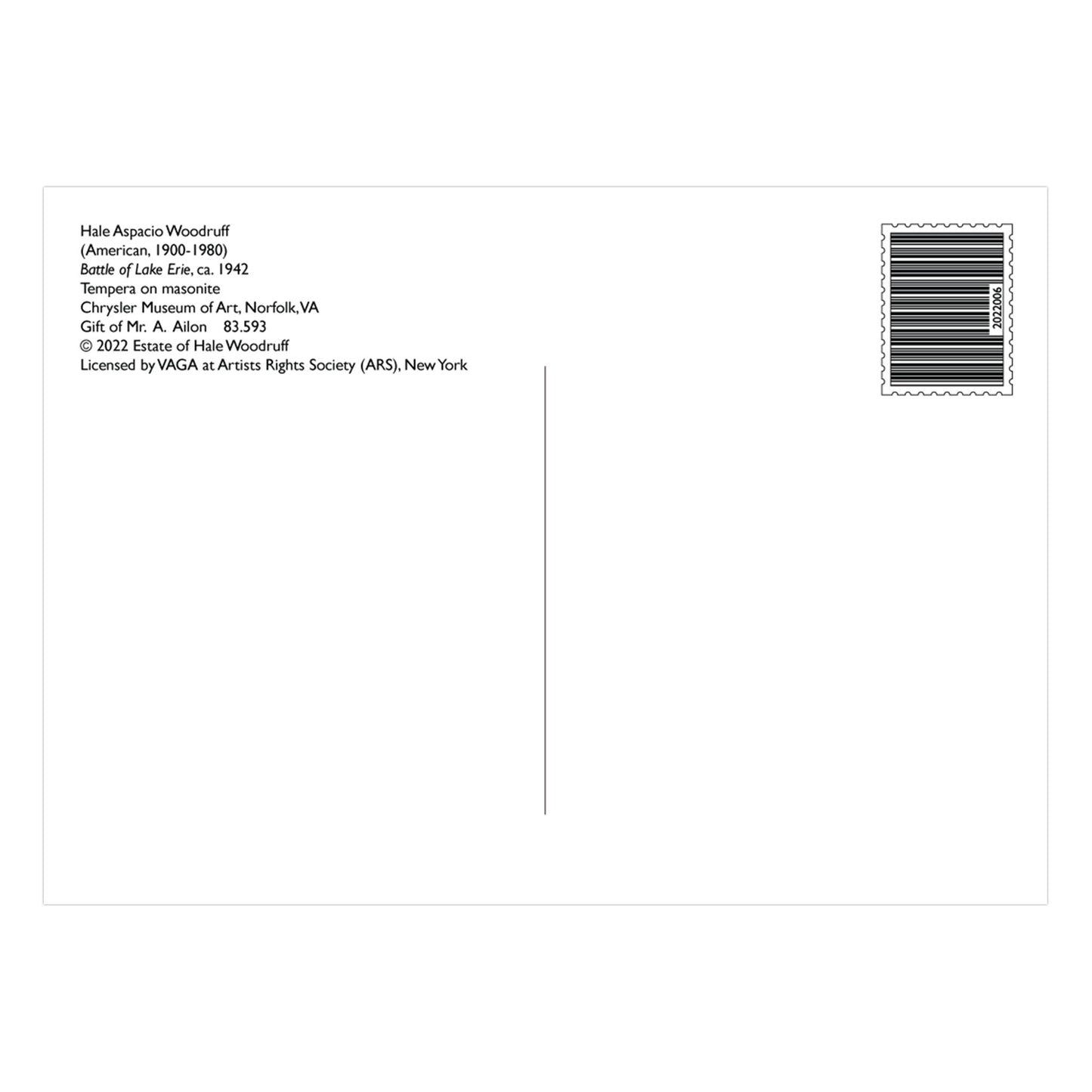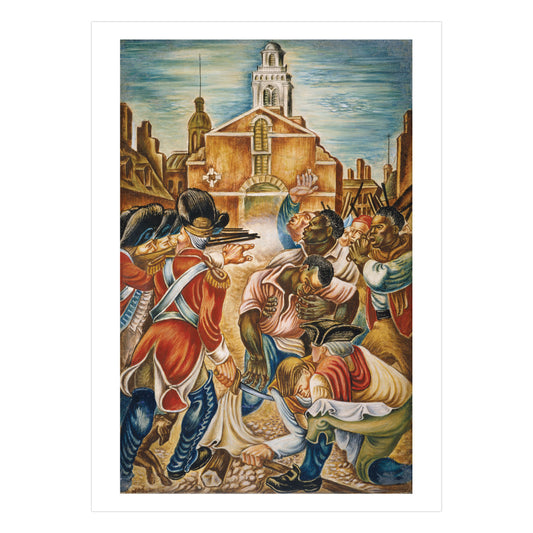Post Card: "Battle of Lake Erie," by Hale Aspacio Woodruff
Post Card: "Battle of Lake Erie," by Hale Aspacio Woodruff
In stock
Couldn't load pickup availability
Printed on sturdy card stock with a matte finish, our full-color oversized post cards are great for sending or creating your own Chrysler collection.
Hale Aspacio Woodruff
(American, 1900-1980)
Battle of Lake Erie, ca. 1942
Tempera on masonite
Chrysler Museum of Art, Norfolk, VA
Gift of Mr. A. Ailon 83.593
© 2022 Estate of Hale Woodruff
Licensed by VAGA at Artists Rights Society (ARS), New York
- Requires First Class Letter Postage to mail
Product Details
Product Details
- Product type: Postcard
- Shipping Dimensions: 7.0 × 5.0 (17.8 × 12.7 cm)
- Shipping Weight: 0.02 lb (0.3 oz; 8 g)
- SKU: SKU: SKU010008063
- UPC: 2022006
In these collections: All Products, Black History Month, Chrysler Museum of Art, Gifts Under $10, Hale Aspacio Woodruff, Made in USA, and Stationery.
Share


-
Chrysler Exclusive
Available only from the Chrysler Museum Shop.

About the
Hale Aspacio Woodruff
Hale Aspacio Woodruff (1900 – 1980) was an American artist known for his murals, paintings, and prints. As a young art student in Indianapolis, Hale Woodruff was among the first artists to receive support from the Harmon Foundation, an organization devoted to recognizing African-American achievement.
More Hale Aspacio Woodruff
-
Post Card: "Death of Crispus Attucks," by Hale Aspacio Woodruff
Regular price $1.25 USDRegular priceUnit price / per -
Post Card: "Battle of Lake Erie," by Hale Aspacio Woodruff
Regular price $1.25 USDRegular priceUnit price / per




